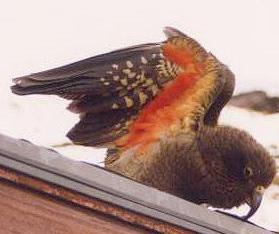The Incredible Jimmy Smith, 1925-2005
Jimmy Smith, the man who almost single-handedly launched and defined the Hammond B-3 organ as a serious instrument in jazz, died peacefully at his home in Arizona on Tuesday 8th February.
The ever-excellent Soul Sides appeared to be the first site to note the event late last night NZ time, a good 12 hours before the mainstream media sites started posting obituaries.
At a personal level, Jimmy Smith is significant in my early musical awakenings. One of Dad's favourite albums is Jimmy Smith's "The Cat" (Verve, 1964), recorded with the Lalo Schifrin Orchestra, and this LP was one of the first jazz records I ever heard. I still remember how exciting that record sounded, with its distintive red cover featuring an out-of-focus black cat on the prowl. There was something in that sound that sang of constrained agressivity, passion bubbling under the surface. Even for a three year old kid dancing round a sunny living room in suburban Auckland in 1981 , it sounded, well...cool.
The ever-excellent Soul Sides appeared to be the first site to note the event late last night NZ time, a good 12 hours before the mainstream media sites started posting obituaries.
At a personal level, Jimmy Smith is significant in my early musical awakenings. One of Dad's favourite albums is Jimmy Smith's "The Cat" (Verve, 1964), recorded with the Lalo Schifrin Orchestra, and this LP was one of the first jazz records I ever heard. I still remember how exciting that record sounded, with its distintive red cover featuring an out-of-focus black cat on the prowl. There was something in that sound that sang of constrained agressivity, passion bubbling under the surface. Even for a three year old kid dancing round a sunny living room in suburban Auckland in 1981 , it sounded, well...cool.
It is little exaggeration to say that Jimmy Smith is jazz organ for the second half of the twentieth century. Geoff Alexander has written the best history of jazz organ, freely available online, and it accurately divides the evolution of this subgenre into pre-Smith and post-Smith. Indeed, any organist today who denies being influenced by Jimmy Smith is flat-out lying. It's a bit like a trumpet player saying that they haven't been influenced by Miles. From Lonnie Smith and Brother Jack McDuff through to John Medeski, all modern organ players have had to assimilate Smith's innovations before moving onto new territories.
As organist Joey DeFrancesco put it well in a Reuters interview last year: "Anyone who plays the organ is a direct descendant of Jimmy Smith. It's like Adam and Eve -- you always remind someone of Jimmy Smith."
Jimmy Smith's mana was amplified over the years by a high calibre posse of collaborators, particularly in the late 50s and 1960s: Kenny Burrell, Oliver Nelson, Ike Quebec, Wes Montgomery, Lou Donaldson, Stanley Turrentine, Jackie McLean and Lee Morgan. His work lies at the grassroots of much soul and gospel influenced jazz and groove music. Smith's considerable back catalogue will likely be sampled and reconstructed by producers and turntablists for decades to come, but there will never be another Jimmy Smith.
As organist Joey DeFrancesco put it well in a Reuters interview last year: "Anyone who plays the organ is a direct descendant of Jimmy Smith. It's like Adam and Eve -- you always remind someone of Jimmy Smith."
Jimmy Smith's mana was amplified over the years by a high calibre posse of collaborators, particularly in the late 50s and 1960s: Kenny Burrell, Oliver Nelson, Ike Quebec, Wes Montgomery, Lou Donaldson, Stanley Turrentine, Jackie McLean and Lee Morgan. His work lies at the grassroots of much soul and gospel influenced jazz and groove music. Smith's considerable back catalogue will likely be sampled and reconstructed by producers and turntablists for decades to come, but there will never be another Jimmy Smith.










0 Comments:
Post a Comment
<< Home